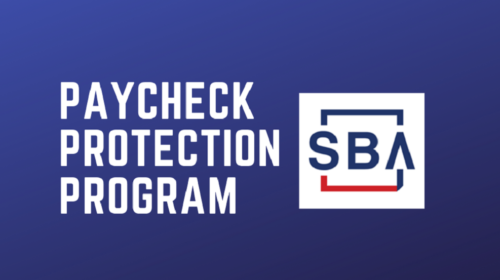IRS Disallows Deduction on Expenses Paid with PPP Forgiveness Money

One of the most important aspects of the CARES Act was the Paycheck Protection Program (“PPP”). Obtaining a PPP loan has been the priority for most small and mid-size businesses. It was so popular that the original funding ran out shortly after the program started. Last week H.R. 266 “Paycheck Protection Program and Health Care Enhancement Act” was passed providing additional funding for the PPP.
By now, most everyone knows the process of applying for a loan through the PPP. If you have questions about the PPP and if you should apply, act immediately. There is a lot of information regarding PPP online including our website’s COVID-19 Business Resource Center. Our estimation is that the money will run out again shortly.
Most businesses are now focused on PPP loan forgiveness. The CARES Act indicated that if the PPP money was spent on eligible expenses through the eight week covered period the loan is forgiven. It is obviously more complicated than this, but that is the basic premise. Unfortunately we are still waiting on final guidance for loan forgiveness. There are still many major questions on how forgiveness will be calculated. We will provide additional details on this once they become available.
Typically when a loan is forgiven or debt has been cancelled this results in taxable income to a business. Section 1106 of the CARES Act indicated that amounts forgiven on a PPP loan “shall be excluded from gross income.” This seemed like a major win for small and mid-size companies. Not so fast!
Unfortunately on April 30, 2020 the IRS released Notice 2020-32 stating “Specifically, this notice clarifies that no deduction is allowed under the Internal Revenue Code (Code) for an expense that is otherwise deductible if the payment of the expense results in forgiveness of a covered loan pursuant to section 1106(b) of the Coronavirus Aid, Relief, and Economic Security Act (CARES Act), Public Law 116-136, 134 Stat. 281, 286-93 (March 27, 2020) and the income associated with the forgiveness is excluded from gross income for purposes of the Code pursuant to section 1106(i) of the CARES Act.”
The IRS is citing Section 265 of the Internal Revenue Code which provides that expenses “allocable to” tax exempt income are not deductible. This prevents a “double dipping” of sorts, whereby a taxpayer would otherwise get both a deduction and tax exempt income related to the same transaction or investment.
We at Haefele Flanagan have been debating this issue since the issuance of the CARES Act. Many people felt that if the IRS applied Section 265 to the PPP loan forgiveness including the exclusion of loan forgiveness under PPP would have been pointless. It appears that this is now the case.
Historically, IRC Section 265 has applied to interest expense incurred to generate tax exempt interest income. However, there have been other instances of the IRS applying IRC 265. In Manocchio v. Commissioner, an airline pilot paid for flight instruction and was ultimately 90% reimbursed under a federal program. The reimbursed payments were tax exempt, leading the IRS to apply Section 265 and disallow any deduction related to the payment for the program.
There is hope. Congress could simply amend Section 265 to accommodate this situation. They’ve done it before, most notably in response to a previous Revenue Ruling that disallowed deductions of a minster of a church who received a tax free housing allowance under Section 107.
As of right now, we have to plan on these deductions being disallowed for federal income tax purposes. We believe that at least one taxpayer, if not many, will take the deductions on their tax returns anyway, which will result in a tax court battle.
It can’t hurt to write your Congressmen or Congresswomen asking for IRC Section 265 to specifically allow these deductions. The point of the PPP was to keep people employed. By removing the tax deduction related to paying the allowable expenses including and most importantly payroll costs, you removed people’s incentive to do so and have done it after many businesses have already started their eight week period. If this doesn’t change, many companies who are closed or operating at a limited capacity could have been better served laying their employees off.
Stay tuned as more information comes out every day.